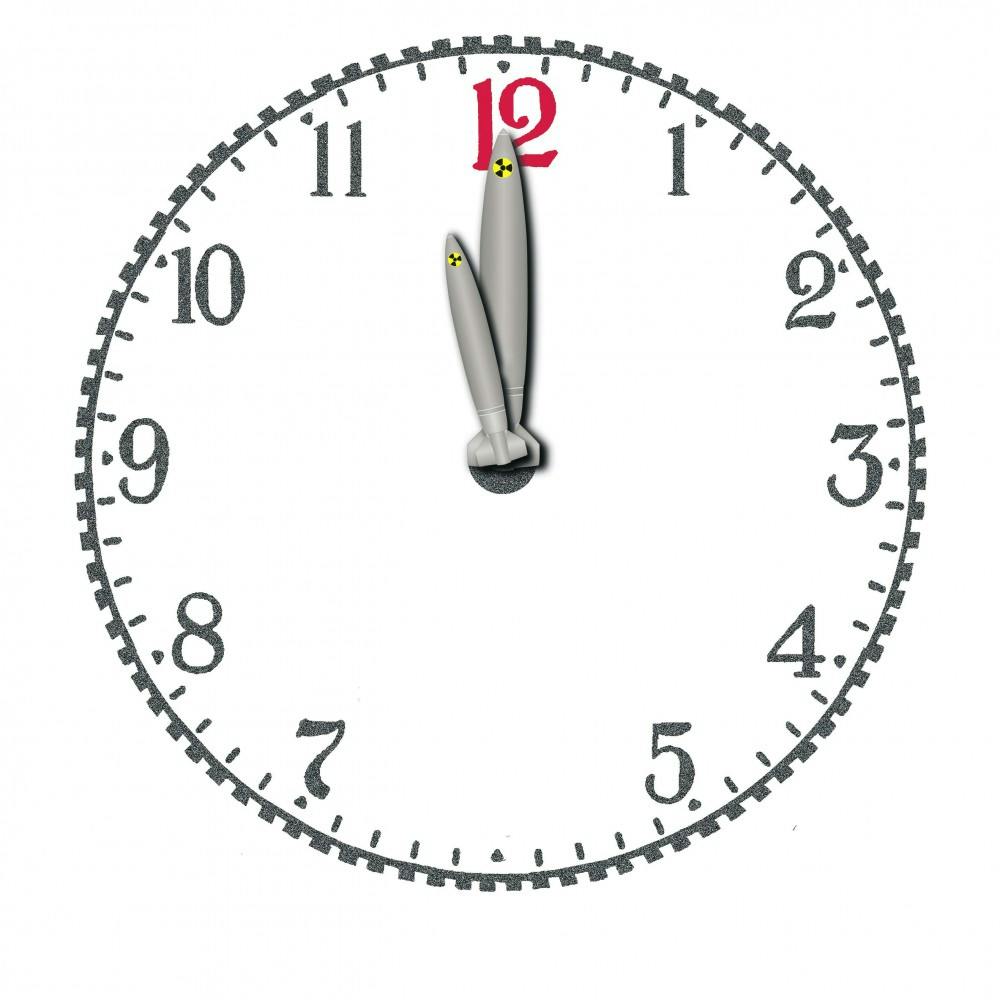Two weeks ago, the Doomsday Clock inched forward another 30 seconds. We now sit a mere two minutes from midnight. And it is exactly as melodramatic as it sounds.
Originally conceived as artwork for a magazine cover, the Doomsday Clock is meant to illustrate how close nuclear weapons and global warming are to pushing us into the apocalypse. The artist who made it was looking for a visual metaphor to express the urgency of it all. And admittedly, it is an effective one.
Maybe too effective.
Like clockwork, whenever there’s an update, a slew of hysterical headlines follow. The second hand ticks forward? “Dangerous Donald and the Doomsday Clock: Trump’s derangement could yet kill us all.” The second hand doesn’t tick at all? "'Doomsday Clock' to stand still amid nuclear tensions" and “'Doomsday Clock' reflects grave threat to world.”
The board responsible for how the clock’s hands move claims that it isn't a scaremongering tool, but after 70 years it should’ve realized that that is exactly what it is. The clock raises more panic than awareness and does more good for the doomsday bunker industry than for the public at large.
At two minutes 'til midnight, the clock has only ever been this close in 1953, when Russia and the U.S. were taking their new bombs out for a spin and vaporizing small islands. But during the Cuban Missile Crisis, when Soviet Russia was trying to station nuclear missiles just 90 miles off the coast of Florida and the U.S. was prepped to throw down to stop them, the Doomsday Clock didn’t budge an inch. Trump tweeting is not the same as being in the height of the Cold War.
The clock is far from a scientific instrument and its movements seem largely arbitrary. Why did it advance 30 seconds and not 45? How much did the signing of the Paris Agreement slow the clock? Why did it debut at 11:53? Well, according to the creator, it’s because “it looked good.” The whole thing is as about as scientific as predicting the housing market by pulling aside a third grader to borrow his paper fortune-teller.
Another fault in the clock is how it takes global warming into account. How are the threats factored into the apparently non-existent equation? At what point does climate change become something that brings about the end of the world? Presumably, things can get much worse, but there isn’t much room for the clock to move forward. If we're at 11:58, what would 11:59 look like?
Once a magazine and now just a website, the Bulletin of the Atomic Scientists just seems to use the Doomsday Clock as a publicity stunt. There's lots of posturing and pageantry, with livestreams and press conferences. The publication releases statements specifically designed to stroke fear. The goals are noble, but the organization's actions seem misguided every step of the way.

